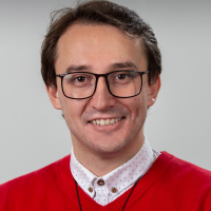
Dr Kannan Ridings
Associate Investigator
Towards Low Energy Tech - Hardware for Future Computing, Mātauranga Māori Research Programme
Address:
SCIENCE CENTRE 303 - Bldg 303
Level 7, Room 703
38 PRINCES ST
AUCKLAND CENTRAL
AUCKLAND 1010
New Zealand
Biography
Kannan Ridings (Rongowhakaata) completed his PhD in physics on melting and instabilities in metal nanowires at the University of Auckland. He has since worked as a research fellow, and then as a lecturer at the University of Auckland contributing to the research done by the COVID-19 branching process modelling group. Dr Ridings is also the coordinator for the Tuākana programme at the University of Auckland which offers tutoring and mentoring to Māori and Pasifika students.
Research interests
Dr Ridings’ research is in theoretical and computational materials science, specifically looking at memristive properties that emerge from nanowire networks. The goal is to develop a working theory for the electronic transport mechanism that emerges from the presence of the network, collaborating with Nicola Gaston’s group and experimental work by Natalie Plank.
From Dr Ridings’ heritage and work with Tuākana, he can supplement the existing Mātauranga Māori research plan that MacDiarmid is developing. He would like to see more Māori and Pasifika students entering into postgraduate science, and to go on to research careers at the MacDiarmid institute and beyond.
Developing a deep understanding the mechanisms behind phenomenon observed in the lab is a crucial step in the scientific process. Computational methods offer a way to bridge experimental results and mathematical theory, forming a positive feedback loop.
Dr Kannan Ridings
I want to see Māori and Pasifika become an integral part of the research space at the MacDiarmid Institute, and New Zealand.
In the news

Annual Report
New Associate Investigators 2021
May 5, 2022
Meet our new Associate Investigators that joined the MacDiarmid Institute whānau in 2021.

News Article
Bridging the divide between theoretical and experimental physics
February 22, 2022
Dr Kannan Ridings from Rongowhakaata is one of the MacDiarmid Institute’s newest Associate Investigators.
Read more about Bridging the divide between theoretical and experimental physics


